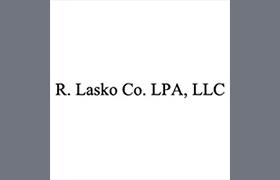Flat Rock Bankruptcy & Debt Lawyer, Ohio, page 2
Sponsored Law Firm
-
 x
x

Click For More Info:
-
R. Lasko Co. LPA, LLC
1406 W 6th St STE 200, Cleveland, OH 44113» view mapBusiness, Estate, Real Estate, Employment Competent Legal Representation
Let R. Lasko Co. LPA, LLC handle all your legal needs today!
216-574-2602
Michael Brian Jackson
Traffic, Divorce, Dissolution, Personal Injury
Status: In Good Standing Licensed: 33 Years
Lisa Marie Snyder
Estate, Family Law, Divorce, Dissolution
Status: In Good Standing Licensed: 27 Years
Troy Dana Wisehart
Litigation, Juvenile Law, Bankruptcy, Personal Injury
Status: In Good Standing Licensed: 33 Years
Christopher Michael Marinko
Litigation, Insurance, Banking & Finance, Commercial Bankruptcy
Status: In Good Standing
Kenneth Edward Bogden
Family Law, Corporate, Commercial Bankruptcy, Personal Injury
Status: In Good Standing Licensed: 46 Years
Adrienne Marie Hines
Social Security, Workers' Compensation, Bankruptcy, Personal Injury
Status: In Good Standing Licensed: 28 Years
Adrienne Marie Hines
Litigation, Social Security, Workers' Compensation, Employment, Bankruptcy
Status: In Good Standing
Randall Scott Bendure
Real Estate, Federal Appellate Practice, Family Law, Collection
Status: In Good Standing Licensed: 51 Years
 Ronald Lasko Cleveland, OH
Ronald Lasko Cleveland, OH AboutR. Lasko Co. LPA, LLC
AboutR. Lasko Co. LPA, LLC
